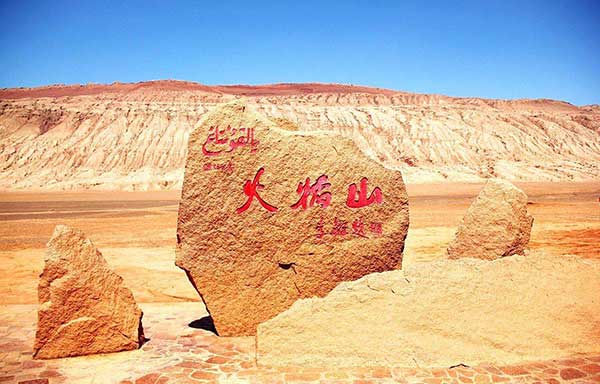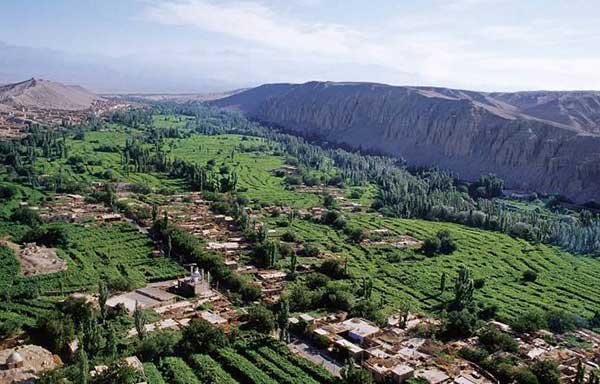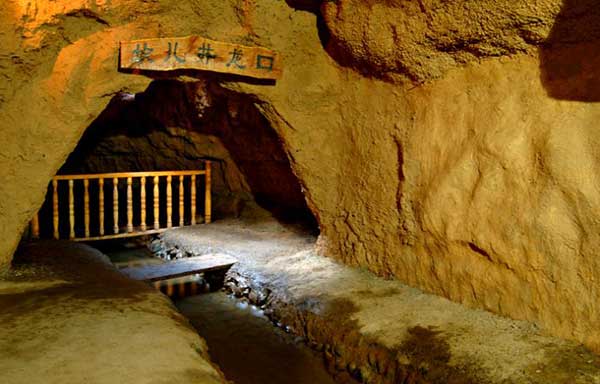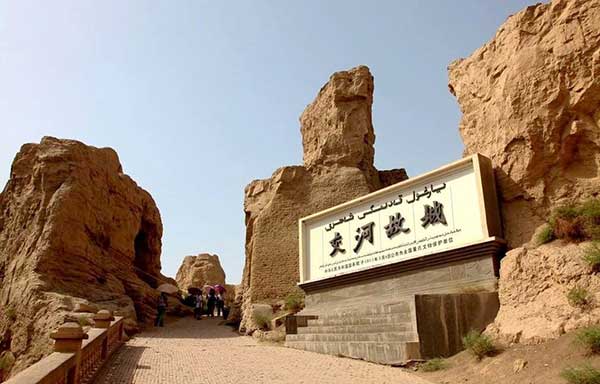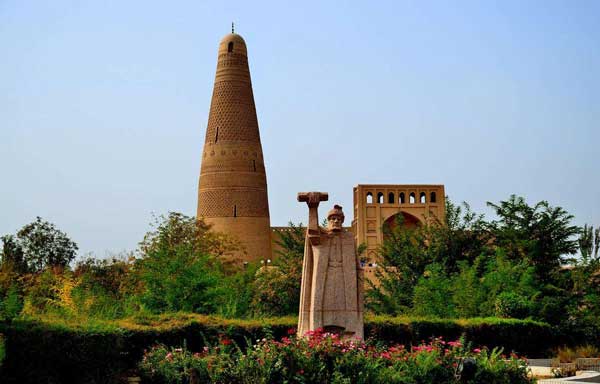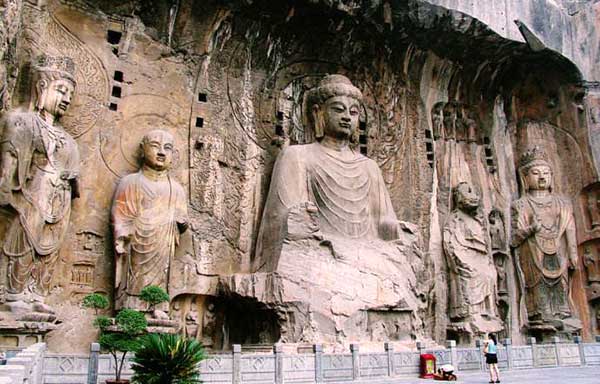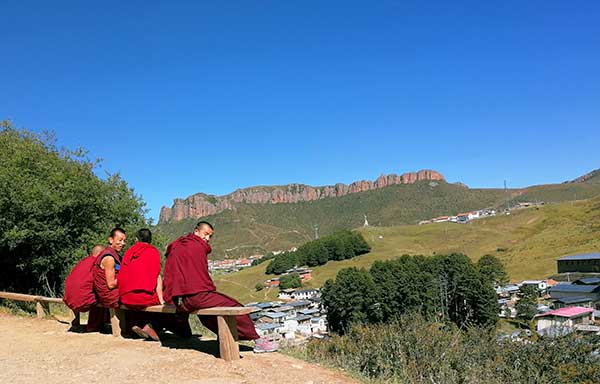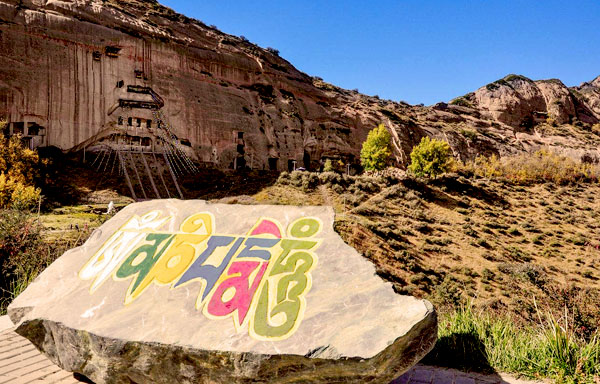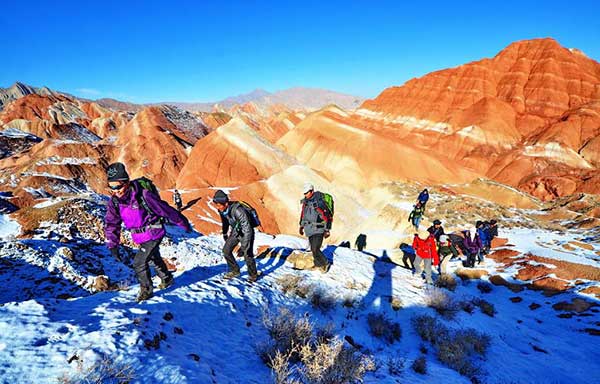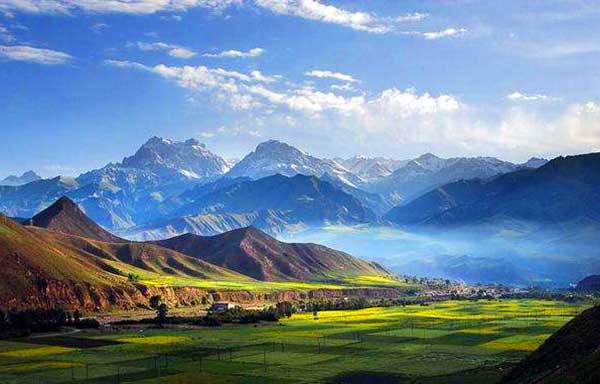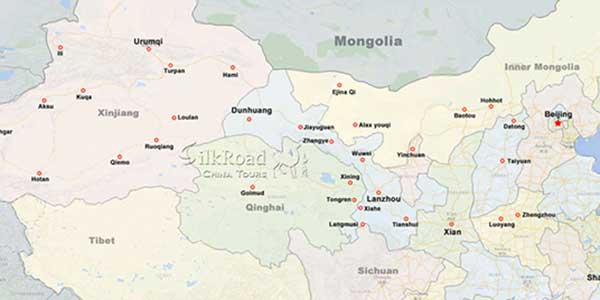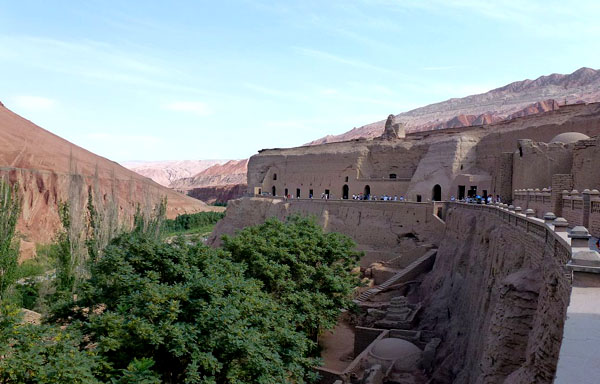 Bezeklik Thousand Buddha Caves located 45 kilometers east of Turpan City, built on the western cliff of Mutougou valley at the foot of Flaming Mountain. There are altogether 83 caves chiseled on the cliff and 57 still existed. it has murals covering an area of 1,200 square meters. It is one of the largest Buddhist grottoes in Turpan as well as Xinjiang.
Bezeklik Thousand Buddha Caves located 45 kilometers east of Turpan City, built on the western cliff of Mutougou valley at the foot of Flaming Mountain. There are altogether 83 caves chiseled on the cliff and 57 still existed. it has murals covering an area of 1,200 square meters. It is one of the largest Buddhist grottoes in Turpan as well as Xinjiang.
Bezeklik Thousand Buddha Caves belong to Gaochang grottoes, which mainly refer to the Buddhist grottoes in Turpan area. Buddhism was introduced to Xinjiang in the 1st century BC, and from Western Han dynasty to Yuan dynasty, it was the dominant religion in Xinjiang. At the height of the Buddhist development in Xinjiang, Turpan and Khotan, and Kizil were known as the three Buddhist centers in the Western Regions. In the flaming mountain of one hundred miles in Turpan, there are grottoes in almost every valley.
The construction of Bezeklik Thousand Buddha Caves started from South and North dynasty (5 CE), through Tang dynasty, Five dynasty, Song and Yuan Dynasty, altogether 7 centuries. During the time, it has been the Buddhist center of Gaochang area.
At the end of the 13th century, when the royal family of Gaochang moved to Yongchang, Gansu province and after the spreading of Islam to Turpan, Buddhism gradually declined, and the Buddhist caves of the Bezeklik declined. At the beginning of 20 CE, the explorers of Russia, Germany, Britain and Japan took a lot of murals and statues back to their countries, and the eyes of the frescos were all dug out by Muslims, the Buddhist caves suffered severe damage, but the remains are still gorgeous and elaborate. In 1982 Bezeklik Thousand Buddha Caves was listed by the state council as the national key cultural relic protection unit.
Attractions in the area
Related Tours
General Information
Alias: Qianfodong
Loc: 45 km from Turpan
Entrance: 40 RMB
Open Time: 08:00~20:30
Relevant blogs
-
How did the name of Tianshui in Gansu come about?
The name Tianshui is very pleasant to the ear, and it reminds one of that exquisitely beautiful verse, "After getting drunk, one doesn't know if the sky is in
-
The 8th Silk Road Hotel Festival was successfully held i
On December 27th, the "8th Silk Road Hotel Festival" grandly opened at the Yujing International Hotel in Zhangye. This hotel festival gathered industry experts,
-
The Karez Irrigation System in Turpan has been selected
On September 3rd, at the 75th Executive Council Meeting of the International Commission on Irrigation and Drainage held in Sydney, Australia, the 2024 (11th bat
-
What is the connection between "dragons" and "snakes
In traditional Chinese culture, the snake has a dual identity of auspiciousness and danger. Ancient people believed that the snake not only possesses divine cha
-
Endangered Przewalski's Horses Spotted at Dunhuang Yume
<p>In early February, a group of special "visitors"—the Przewalski's horses—appeared at the Dunhuang Yumen Pass scenic area in Gansu Province, a U
-
The Fourth Dunhuang Cultural Tourism Supplier Conference
On the morning of February 18th, the Fourth Dunhuang Cultural Tourism Supplier Conference in Northwest China commenced at the Dunhuang International Convention






